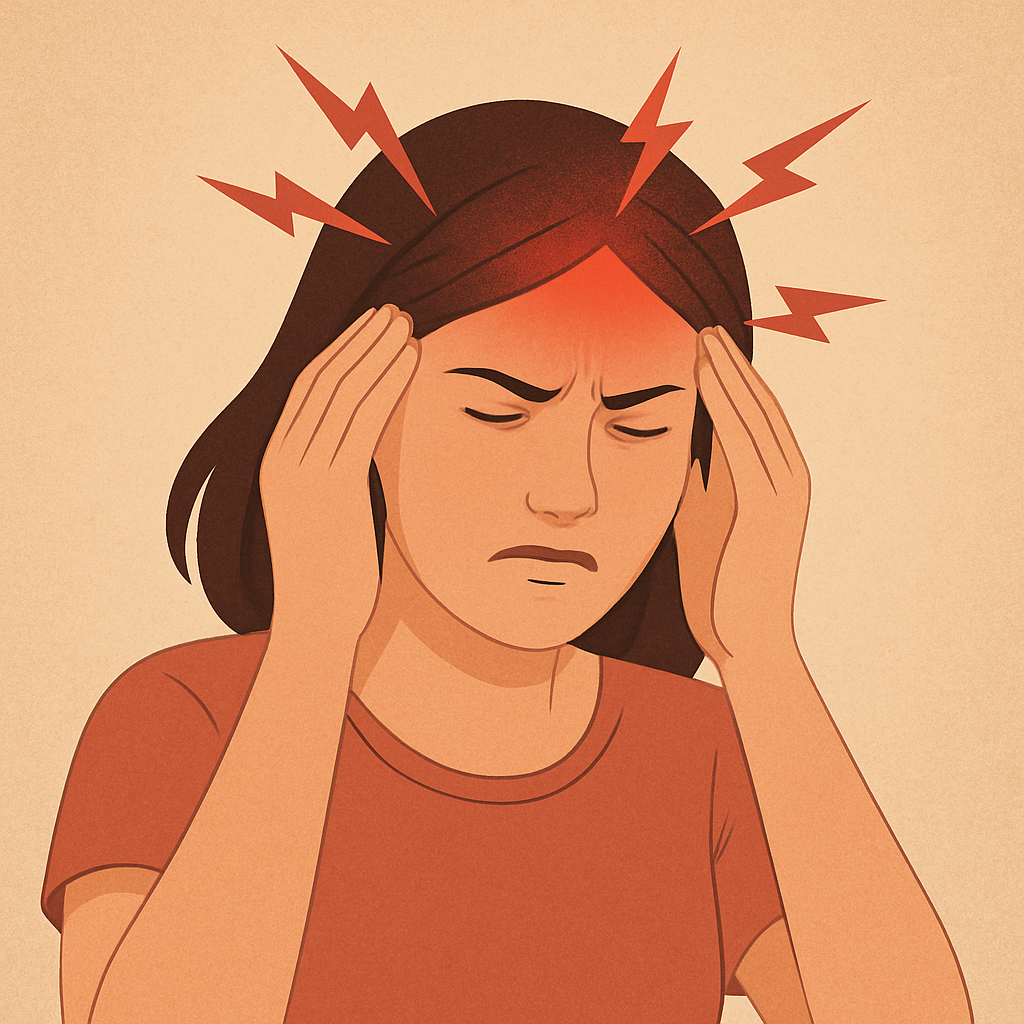Headache is one of the most common health concerns affecting people across all age groups. While headaches are often linked with lifestyle factors such as stress, eye strain, or lack of sleep, in certain cases they may be caused by serious underlying conditions. One such critical cause is increased intracranial pressure (ICP). Elevated pressure inside the skull can lead not only to severe headache but also to life-threatening complications if left unaddressed. Ayurveda and Panchakarma offer supportive approaches to manage symptoms, reduce discomfort, and improve overall wellbeing.
Understanding Intracranial Pressure and Headache
The human brain is protected within the rigid skull, cushioned by cerebrospinal fluid (CSF). Normally, this system maintains a delicate balance of blood, brain tissue, and CSF. Intracranial pressure is the pressure exerted by these components inside the skull.
When ICP increases, it compresses brain tissues and nerves, leading to symptoms like:
- Severe, persistent headache (often worse in the morning or on coughing/sneezing)
- Nausea and vomiting
- Blurred or double vision
- Changes in consciousness or alertness
- Dizziness and balance problems
These headaches are not the usual tension headaches but are often described as deep, throbbing, and progressively worsening. Immediate medical evaluation is essential to prevent complications.
Headache due to Increased ICP in Ayurveda
In Ayurvedic understanding, the brain and nervous system are governed primarily by Vata dosha, especially the subtypes Prana Vata and Vyana Vata, which control neurological functions, circulation, and sensory perception. An increase in intracranial pressure can be viewed as an imbalance in Vata along with Kapha.
- Vata aggravation leads to pain, restlessness, and nervous system dysfunction.
- Kapha aggravation manifests as heaviness, accumulation of fluids, and obstruction of normal flow within the cranial cavity.
This condition can be correlated with disorders described under Shiro Roga (head diseases) in Ayurvedic texts. Headache caused by obstruction, heaviness, and fluid imbalance is considered Kapha-Vata dominant in nature.
Ayurvedic Principles of Management
While modern medicine focuses on reducing ICP through medications, surgical drainage, or shunt placement, Ayurveda provides supportive and complementary management to ease symptoms and improve quality of life. The goals of Ayurvedic management are:
- Balancing Vata and Kapha doshas
- Reducing fluid accumulation and clearing obstructions
- Improving circulation and neurological function
- Relieving pain and heaviness in the head
- Enhancing overall vitality and immunity
Ayurvedic Therapies for Headache due to Increased ICP
- Shirodhara (oil pouring on forehead)
- Warm medicated oil is continuously poured on the forehead.
- Helps in calming Prana Vata, relieving stress, improving sleep, and reducing the intensity of headache.
- Nasya (nasal instillation of medicated oil)
- Herbal oils such as Anu Taila or Shadbindu Taila are administered through the nostrils.
- Clears blockages, enhances cerebral circulation, and balances doshas in the head region.
- Abhyanga (therapeutic massage)
- Full body oil massage followed by steam therapy reduces Vata imbalance, improves blood flow, and helps in relaxation.
- Shiro Abhyanga (head massage)
- Using medicated oils like Brahmi Taila or Ksheerabala Taila to reduce pain, heaviness, and nervous irritability.
- Virechana (therapeutic purgation)
- Helps eliminate aggravated Pitta and Kapha, improving metabolism and reducing systemic congestion.
- Rasayana (rejuvenative therapy)
- Promotes nerve nourishment, boosts immunity, and supports long-term brain health. Herbs like Ashwagandha, Brahmi, and Shankhpushpi are commonly used.
Useful Ayurvedic Herbs
- Brahmi (Bacopa monnieri): Improves memory, calms the nervous system, and reduces headache intensity.
- Shankhpushpi (Convolvulus pluricaulis): Acts as a natural brain tonic, relieves stress and mental fatigue.
- Ashwagandha (Withania somnifera): Strengthens the nervous system, reduces inflammation and supports overall vitality.
- Guduchi (Tinospora cordifolia): Enhances immunity and reduces systemic inflammation.
- Jatamansi (Nardostachys jatamansi): Promotes relaxation, improves sleep, and reduces anxiety associated with chronic headache.
Lifestyle and Diet Recommendations
- Dietary Measures
- Favor light, easily digestible foods.
- Warm, freshly prepared meals with ghee in moderation to balance Vata.
- Avoid excessive salty, oily, and heavy foods that aggravate Kapha.
- Stay hydrated but avoid excessive fluid intake at one time.
- Lifestyle Measures
- Maintain a regular sleep schedule.
- Practice gentle yoga and pranayama (Anulom Vilom, Bhramari) under guidance.
- Avoid excessive screen exposure, loud sounds, and stressful activities.
- Create a calm environment with meditation and mindfulness practices.
Precautionary Note
Headache due to increased intracranial pressure is a serious medical condition. Ayurveda plays a supportive role but should not replace emergency medical care. If a person develops sudden severe headache, vomiting, blurred vision, or altered consciousness, immediate hospital care is essential.
Conclusion
Headache arising from increased intracranial pressure is a complex condition requiring careful medical attention. Ayurveda, with its holistic approach, helps in managing the associated pain, stress, and neurological imbalance by balancing Vata and Kapha doshas, improving circulation, and calming the nervous system. Therapies like Shirodhara, Nasya, and herbal remedies such as Brahmi, Ashwagandha, and Shankhpushpi play an important role in supportive care. Combined with modern interventions, Ayurvedic management can significantly improve comfort, enhance resilience, and promote overall wellbeing for individuals struggling with such headaches.


